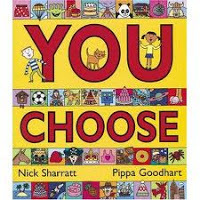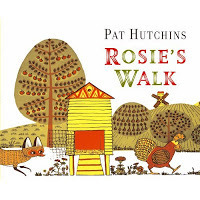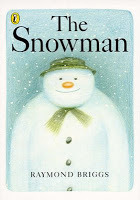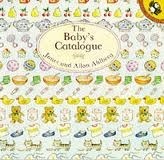Books With Very Few Words, Some With None At All - Karen Saunders
This might be quite an unusual post for a writer, but today I wanted to blog about picture books that have limited, or no text.
These sorts of books offer extensive opportunities for discussion with children, through talking about the pictures and what they can see on the pages. They also offer children the chance to ‘read’ a book by themselves, as they can understand so much of what is happening just from looking at the illustrations, encouraging reading confidence.
The pictures within these sorts of books can be interpreted so many different ways and imaginations can run riot, something that’s so important for encouraging creativity in the young. They also allow readers a chance to experience the subtle world of expressions such as body language and intonation, and begin to understand how these things work.
So here goes, my top five books that fit into this category.
You Choose, by fellow Picture Book Den blogger Pippa Goodhart, illustrated by Nick Sharatt
 My toddler adores this award-winning picture book. We’ve found it’s particularly good for him to read and look at in the car by himself. Pippa has blogged about her book here in detail, but essentially it’s a book that's not actually a story as such, but one where children can make choices. They can decide where they’d like to live, where they’d like to go, who they'd like their friends to be, what they’d like to eat…there are many excellent discussions to be had from this book!
My toddler adores this award-winning picture book. We’ve found it’s particularly good for him to read and look at in the car by himself. Pippa has blogged about her book here in detail, but essentially it’s a book that's not actually a story as such, but one where children can make choices. They can decide where they’d like to live, where they’d like to go, who they'd like their friends to be, what they’d like to eat…there are many excellent discussions to be had from this book! Rosie’s Walk, by Pat Hutchins
 Rosie the hen goes for a walk, while a wily fox tries to catch her. Rosie is completely oblivious to everything that’s going on behind her, as the fox gets out-manoeuvred at every turn. The way the fox gets his comeuppance causes much hilarity for the reader, because although what happens to the fox is never vocalised, no words are necessary for this very visual humour. This book has limited text, but you can get the complete gist of the story from the pictures alone.
Rosie the hen goes for a walk, while a wily fox tries to catch her. Rosie is completely oblivious to everything that’s going on behind her, as the fox gets out-manoeuvred at every turn. The way the fox gets his comeuppance causes much hilarity for the reader, because although what happens to the fox is never vocalised, no words are necessary for this very visual humour. This book has limited text, but you can get the complete gist of the story from the pictures alone. Hug, by Jez Alborough
 Ah, the book that really tests an adult’s reading skills, getting them to interpret just one word, ‘Hug’, in many, many, different ways. A monkey walks through the jungle, looking for his Mummy, seeing other animals hugging along the way. It’s a great demonstration of the intonation of language, how a word can mean different things depending on how it’s said, and also of body language – we understand how the monkey is saying the word just from the expression on his face.
Ah, the book that really tests an adult’s reading skills, getting them to interpret just one word, ‘Hug’, in many, many, different ways. A monkey walks through the jungle, looking for his Mummy, seeing other animals hugging along the way. It’s a great demonstration of the intonation of language, how a word can mean different things depending on how it’s said, and also of body language – we understand how the monkey is saying the word just from the expression on his face.The Snowman, Raymond Briggs
 A Christmas classic that can be enjoyed anytime (For some reason, Christmas books go down particularly well in our house in the height of summer). The Snowman tells of a young boy who builds a snowman that comes to life. Beautiful illustrations do all the story-telling work, and the expressions on the young boy’s face show us how he is feeling and what he is experiencing. A wonderful first opportunity for young children to ‘read’ a story.
A Christmas classic that can be enjoyed anytime (For some reason, Christmas books go down particularly well in our house in the height of summer). The Snowman tells of a young boy who builds a snowman that comes to life. Beautiful illustrations do all the story-telling work, and the expressions on the young boy’s face show us how he is feeling and what he is experiencing. A wonderful first opportunity for young children to ‘read’ a story. The Baby’s Catalogue, Janet and Allen Ahlberg
 The Baby’s Catalogue is a fabulous book, which features very little text, instead it shows the lives of several babies and what they do in their days. The babies sleep, eat, watch their mummies and daddies, cause chaos in the house, play with their pets and siblings, sit in their high chairs, have their baths and go back to bed. There’s no story as such, but there are plenty of familiar things to see and discuss.
The Baby’s Catalogue is a fabulous book, which features very little text, instead it shows the lives of several babies and what they do in their days. The babies sleep, eat, watch their mummies and daddies, cause chaos in the house, play with their pets and siblings, sit in their high chairs, have their baths and go back to bed. There’s no story as such, but there are plenty of familiar things to see and discuss.These are five books I’ve loved sharing with children, but which are your favourites?
Come find me on the web at www.karensaunders.co.uk or 'like' me on Facebook at www.facebook.com/karensaunderswriter
I tweet, too, @writingkaren
Published on January 29, 2013 23:00
No comments have been added yet.



